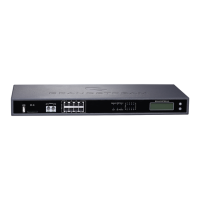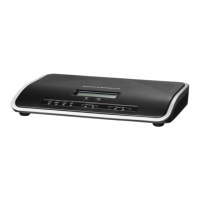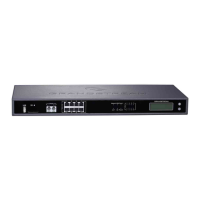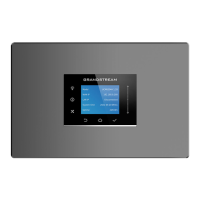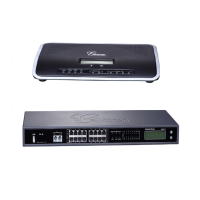P a g e | 208
UCM6510 IP PBX User Manual
Version 1.0.20.31
DOD Number – Include the trunk’s DOD number in the PPI
Header. If no DOD number has been set, the trunk’s preferred
CID will be used.
If enabled, the SIP INVITE message sent to the trunk will contain PAI (P-
Asserted-Identity) header including configured PAI Header. The default
setting is “No”.
Note: “Send PPI Header” and “Send PAI Header” cannot be enabled at
the same time. Only one of the two headers are allowed to be contained
in the SIP INVITE message.
If “Send PAI Header” is enabled and “PAI Header” is configured as
“123456” for instance, the PAI header in the SIP message sent from the
UCM will contain “123456”. If “Send PAI Header” is enabled and “PAI
Header” is configured as “empty”, the PAI header in the SIP message sent
from the UCM will contain the original CID.
Note: “Send PAI Header” needs to be enabled in order to use this feature.
Only alphanumeric characters are allowed and/or special characters #*-
_+. with a limit of 64 characters.
If enabled and "From User" is configured, the INVITE's From header will
contain the DOD number.
If checked and option "Send PAI Header" not checked, the PAI header will
be passthrough from one side to the other side.
Select to enable outbound proxy in this trunk. The default setting is "No".
When outbound proxy support is enabled, enter the IP address or URL of
the outbound proxy.
Configure where to get the destination ID of an incoming SIP call, from SIP
Request-line or To-header.
The default is set to "Request-line".
Configure the default DTMF mode when sending DTMF on this trunk.
Default: The global setting of DTMF mode will be used. The global
setting for DTMF Mode setting is under Web GUIPBX
SettingsSIP SettingsToS.
RFC4733: Send DTMF using RFC4733.
Info: Send DTMF using SIP INFO message.
Inband: Send DTMF using inband audio. This requires 64-bit codec,
i.e., PCMU and PCMA.
Auto: Send DTMF using RFC4733 if offered. Otherwise, inband will
be used.
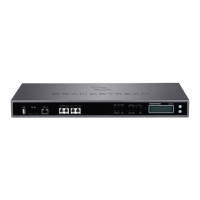
